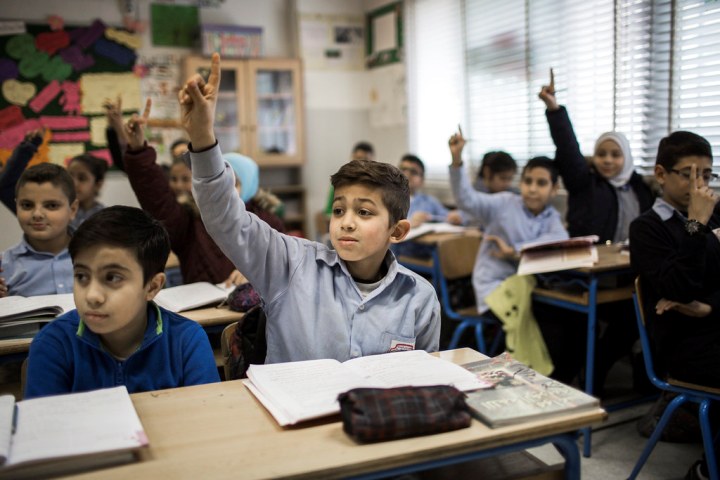Policy paper calls for better training for teachers to support refugee children
“Teachers are not, and should never be regarded as mental health specialists, but they can be a crucial source of support for children suffering from trauma if they’re given the right training,” said Manos Antoninis, Director of the GEM Report.

- Country:
- Syrian Arab Republic
A new policy paper issued by UNESCO’s Global Education Monitoring Report on World Refugee Day (20 June) tackles the educational challenge of trauma, a condition experienced by some school-age migrant and refugee children, whose overall number has grown by 26% since 2000. Many of these children have had traumatic experiences before leaving their homes, during the journey or while settling in a new community or country and develop toxic stress with negative consequences that also affect their ability to learn.
Eight years since the outbreak of conflict in Syria, the paper calls for better training for teachers to provide psychosocial support to children who have lived through traumatic events.
Jenny Caroline Herbst, a teacher in a Welcome Class for new arrivals in Germany said, “There is one boy who was held in detention in Iraq – if you shout at him, he runs out of the room and doesn’t come back. I have had no formal training. And yes I’ve felt overwhelmed. Often teachers don’t realize that traumatized children cannot learn like other children. These children have often become the head of the household. They don’t have a comfort zone in which to heal from their trauma.”
In Germany, one-fifth of refugee children suffer from the post-traumatic stress disorder. Unaccompanied minors are particularly vulnerable. One-third of the160 unaccompanied asylum-seeking children in Norway—from Afghanistan, the Islamic Republic of Iran and Somalia—suffered from post-traumatic stress disorder; of the 166 unaccompanied refugee children and adolescents in Belgium, 37-47% had severe to very severe symptoms of anxiety, depression and PTSD.
Rates of trauma among the displaced in low and middle-income countries are also high. For instance, 75% of the 331 internally displaced children in camps in southern Darfur in Sudan met diagnostic criteria for post-traumatic stress disorder, and 38% suffered from depression.
In the absence of health centres, schools often play a key role in restoring a sense of stability. But teachers need basic knowledge of trauma symptoms and how to help affected students. However, they face challenges, in host countries and, particularly, in emergency settings. NGOs, including the International Rescue Committee, iACT, and Plan International, are training teachers to face this challenge through their programmes, but their reach is insufficient.
“Teachers are not, and should never be regarded as mental health specialists, but they can be a crucial source of support for children suffering from trauma if they’re given the right training,” said Manos Antoninis, Director of the GEM Report.
In Germany, the majority of teachers and day-care workers said that they did not feel properly prepared to address the needs of refugee children. In the Netherlands, 20% of teachers with more than 18 years of experience working in mainstream schools reported that they experienced a high degree of difficulty dealing with students with trauma. The vast majority of these teachers (89%) encountered at least one student with trauma in their work. A review of early childhood care and education facilities for refugee children in Europe and North America found that, although many programmes recognized the importance of providing trauma-informed care, training and resources were ‘almost universally lacking’.
“Conflicts and displacement are not going away,” says Antoninis. “They call for considerable changes in teaching practice that countries must work into their plans. Shifting teachers’ approaches towards these children, helping them build confidence and self-expression through role-playing and group discussions can hand them a life-line.”
Key recommendations:
Learning environments must be safe, nurturing and responsive.
Teachers working with migrant and refugee students who have suffered trauma face particular hardships and need the training to cope with challenges in the classroom.
Psychosocial interventions require cooperation between education, health and social protection services.
Social and emotional learning interventions need to be culturally sensitive and adapted to the context. They should be delivered through extra-curricular activities as well.
Community and parental involvement should not be neglected.










